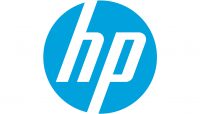 The historical idea that inkjet is too expensive and the devices are too slow for an office environment “wasn’t true then, and it’s definitely not true now”.
The historical idea that inkjet is too expensive and the devices are too slow for an office environment “wasn’t true then, and it’s definitely not true now”.
The HP-sponsored article on the IT Pro website says inkjet technology has developed “radically” over recent years, giving as examples HP’s PageWide technology and (HP’s) OfficeJet X series of printers, which “are delivering up to double the speed of comparable laser printers for half the running costs”.
Businesses need to change from thinking about the costs of ink in the office to considering the costs of deciding not to use ink, as the “tried-and-tested option” may lead to companies spending more than they need to, and so “adding needlessly to their environmental impact” and spurning business opportunities.
Inkjets have also overtaken laser printers in terms of speed, because HP’s OfficeJet Enterprise X585 series can print monochrome and colour pages at speeds of up to 75ppm. This is “far in excess of any comparable laser printer” and doubles the speed of many premium business models.
Environmental impact is another motive for choosing ink, the piece says. Laser printing “requires a lot of heat and energy”, and adding to this the emissions involved in printing and imaging drums and engines that may not last for the printer’s lifespan, as well as the size of toner cartridges and packaging, and laser “can’t compare” with inkjet in terms of environmental costs.
The OfficeJet Pro X or Enterprise X series printers also use up to 84 percent less energy than some equivalent laser print devices, and run on under half the energy consumed by an 18W light bulb over a year. Inkjets generate 94 percent less supply and packaging waste in a year compared to lasers. The IT Pro article anticipates a customer could save 55 percent of their carbon footprint by using the OfficeJet X series, and cites a recent IDC/HP study showed “you could save the equivalent of 189 litres of petrol over 100,000 pages”.
[adrotate banner=”248″]
The piece also notes that some people think that only laser printers can produce high-quality prints, yet inkjet can deliver sharp graphics and rich black output. The OfficeJet Pro X and Enterprise models use pigment inks, producing water and smear-resistant prints, and inkjet devices are able to produce “bright, vibrant colours even on plain paper”, and so are suitable for colour reports or proofing marketing materials, as well as proposals, reports, memos, forms and fact sheets.
Reliability and low Total Cost of Ownership (TCO) are also elements where inkjet has gained an advantage, as the PageWide technology uses fewer moving parts, while an optical detection system works to check the volume, speed and trajectory of the ink drops each second to ensure each nozzle is working properly. A built-in service station cleans, wipes and protect each of them throughout the lifetime of the printer.
HP’s printers are also able to sustain a duty cycle of up to 6,000 pages per month, thanks to a “robust” paper handling mechanism working with the PageWide head and HP original inks help. Other features of the OfficeJet Pro X and Enterprise X printers include the JetAdmin tools used to manage laser printers, and high yield cartridges, which are capable of printing up to 10,000 monochrome pages and 6,600 in colour, meaning fewer trips to the printer to install new ink.
In addition, inkjet printers generally cost less than lasers, the article comments, a fact which applies to office as well as consumer inkjets. The price of the OfficeJet Pro x476dw MFP, which runs at 55ppm and can take on workloads of up to 4,200 pages a month, cannot be easily beaten by an equivalent laser device, the piece claims.
The HP devices also discredit the idea that the running costs of inkjet will overtake the initial savings. The HP OfficeJet Pro X and Enterprise X printers have been up to 50 per cent cheaper on cost-per-page in tests, as high-yield cartridges keeping black and white print to less than one pence (1.6 US cents/1.4 euro cents) and colour prints to around five pence (7.8 US cents/seven euro cents).
